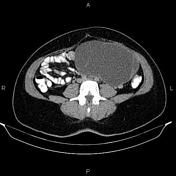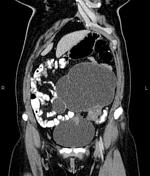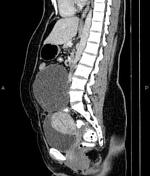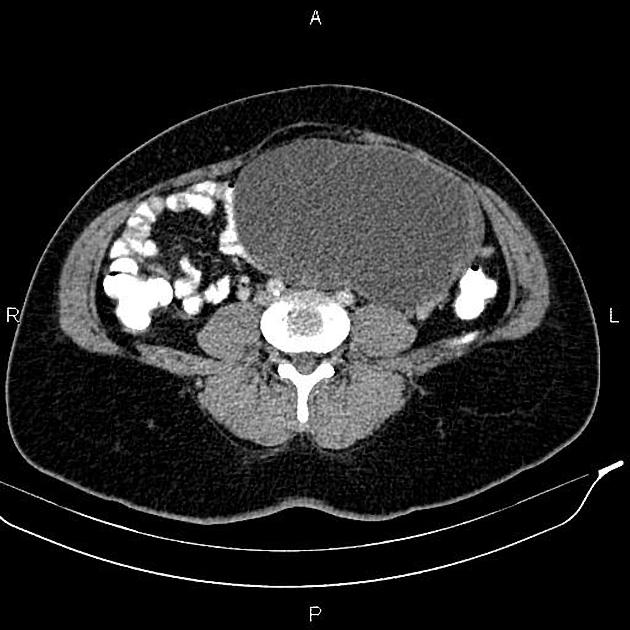Presentation
Pelvic pain and palpable mass on physical exam.
Patient Data









A 195 x 110 x 130 mm multiloculated cystic lesion without enhancing solid component is present at left adnexa, seeming to originate from the left ovary.
A small amount free fluid is observed at posterior cul-de-sac.
The uterus contains a few small fibroids.
The gallbladder is not seen at anatomical location due to prior resection.
Case Discussion
Left adnexal cystic lesion - pathology-proven ovarian serous cystadenoma which is a type of benign ovarian epithelial tumor at the benign end of the spectrum of ovarian serous tumors.
On CT, ovarian serous cystadenoma is often seen as a unilocular (typically) or multilocular cystic mass with homogeneous attenuation, with a thin regular wall or septum and usually no solid component or mural node.




 Unable to process the form. Check for errors and try again.
Unable to process the form. Check for errors and try again.